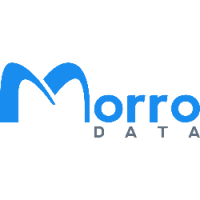Planning Your IT Roadmap for 2024: A Look Ahead
Planning Your IT Roadmap for 2024: A Look Ahead
As we near the end of 2023, are you gearing up to plan for the next year’s budget and IT deployment? The dynamic IT landscape demands forward-thinking strategies to stay competitive and efficient. In this blog, we’ll guide you through the essential considerations for 2024. It’s time to evaluate your existing infrastructure, update or retire outdated systems, and embrace the latest trends to enhance productivity and security. We’ll focus on two pivotal sections in this roadmap: replacing Windows Servers and optimizing remote access for remote collaboration users.
Section 1: Replacing Windows Server with a Hybrid or Full Cloud Environment
1. Evaluating the Need for Change
As of October 2023, the extended support for Windows Server 2012 and 2012 R2 is approaching its end of life. Now, if you don’t replace the file server, your company may face a significant security risk, as critical security patches will no longer be available for these operating systems. The security vulnerabilities that result from this situation can potentially jeopardize your company’s data and applications, making it imperative to take action.
To address this situation, it is essential to evaluate your existing Windows Servers. Here are some key points to consider during this evaluation:
- Performance: Determine whether your current Windows Servers are delivering the performance your organization requires. Are they running efficiently, or do you encounter frequent performance bottlenecks and slowdowns? Performance issues can impact productivity and user experience. Additionally, data loss can be catastrophic, so having a reliable backup and recovery strategy is essential.
- Security: Given the critical importance of security in the digital age, please consider whether your file servers are up to date with the latest security standards, or are there vulnerabilities that need addressing. The absence of security updates puts your organization at risk of cyberattacks and data breaches.
- Scalability: Consider whether your existing servers can accommodate the growing needs of your organization. If your business has grown since the implementation of Windows Server 2012, it’s crucial to verify that your server infrastructure can seamlessly scale to meet the increased demands without compromising on performance and security.
2. Cost Considerations
Moreover, it’s crucial to factor in the associated costs when evaluating your Windows Servers. Consider the expenses related to server maintenance/replacement, licensing, and hardware upgrades. These ongoing costs can significantly impact your IT budget and overall operational efficiency. Analyze whether investing in modern server solutions or migrating to the cloud may be a more cost-effective approach in the long run.
3. Data Access and Sharing Evolution
Given the changing landscape of work, with the increasing demand for hybrid work arrangements, you should also assess your organization’s file sharing and data access requirements. Consider whether your current setup meets the needs of a workforce that operates both in-office and remotely. Switching to a hybrid solution or fully embracing a cloud environment can provide the flexibility required to support hybrid working effectively.
4. A Centralized Solution- Morro Data’s CloudNAS
CloudNAS, a modern solution for global file management, enables you to access a centralized data repository from anywhere, effectively minimizing the expenses associated with maintaining physical servers. Your data is securely stored in the cloud, utilizing a pay-as-you-grow model to optimize resource allocation. The streamlined data access and sharing mechanisms enhance remote collaboration and remote work efficiency, aligning with the evolving demands of the modern work environment.
Section 2: Remote Access for Remote Users
1. The Rise of Remote Work
The world has witnessed a significant shift towards remote work, a transformation driven by changing work cultures and the global landscape. It’s crucial to recognize that remote work is not just a temporary trend but a permanent aspect of the modern work environment. To adapt to this change, your IT strategy needs to cater to the unique requirements of remote teams, particularly those engaged in design collaboration.
2. Why Not Online Storage?
While online storage services, such as Google Drive, Dropbox, or Microsoft OneDrive, are valuable for storing and sharing files, they may not always be the best choice for file sync and collaboration, especially for more complex tasks or for professional design teams.
Online storage primarily focuses on file storage and sharing, with limited collaboration features. Many design tasks require exclusive access to a file to avoid conflicts. Online storage services generally lack file-locking features, which can lead to issues when several team members need to work on a specific file simultaneously. Additionally, some of these services have restrictions on the types of files they can efficiently sync, posing challenges for design teams using specialized software with specific file formats.
3. Considering BIM 360?
BIM 360, like many Autodesk products, can be costly, especially for smaller design teams or firms with limited budgets. The user-based pricing can add up quickly, making it less accessible for some businesses. When opening a large project with a large number of assets in the BIM 360 browser viewer or APP, the model’s full loading may be time-consuming, leading to potential performance issues.
4. Morro Data’s Solution for the Remote Design Team
Morro Data steps in with a tailored solution for design collaboration teams. Morro Data’s CacheDrive serves as a gateway that enables seamless file access for remote design teams, effectively supporting their collaborative efforts. In the realm of design work, real-time collaboration and version control are critical features. Moreover, the platform’s file-locking capabilities, compatible with various CAD software, play a pivotal role in preventing conflicts and data corruption, ensuring that design teams can operate efficiently.
